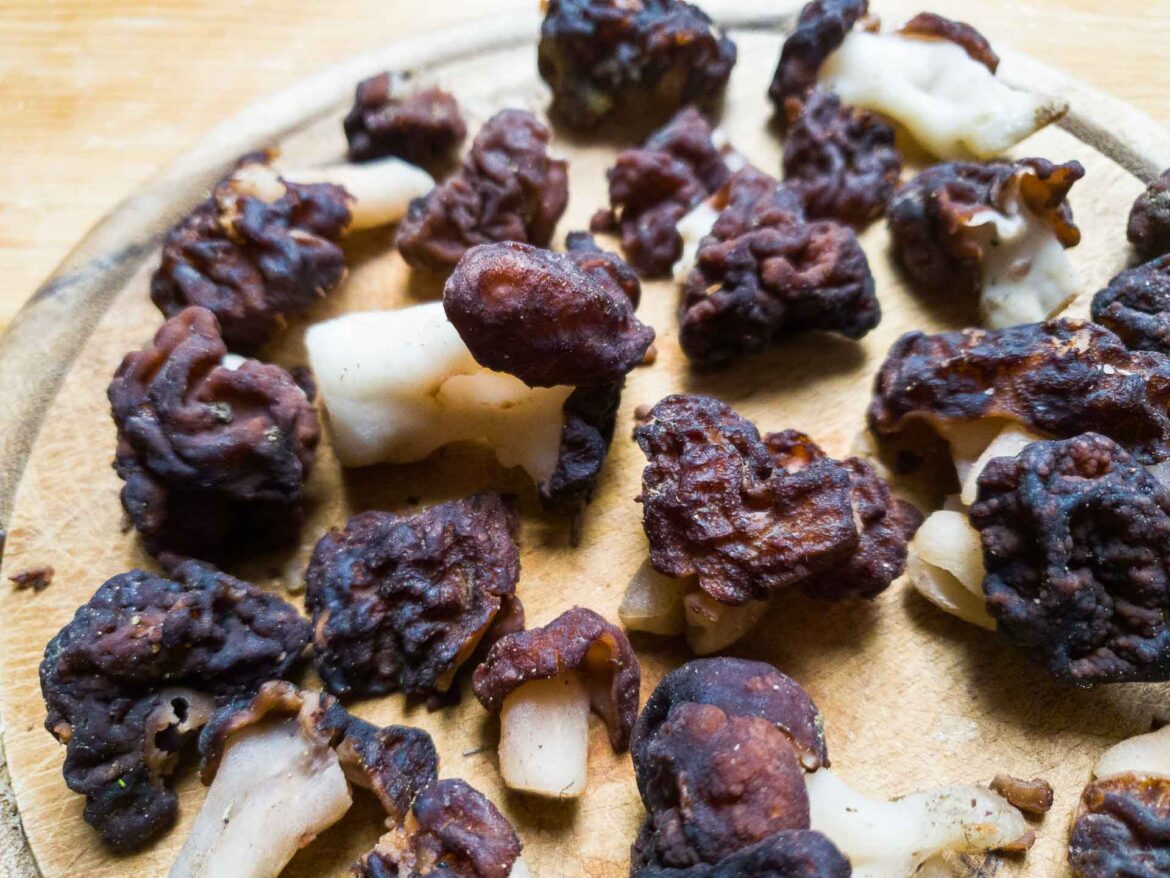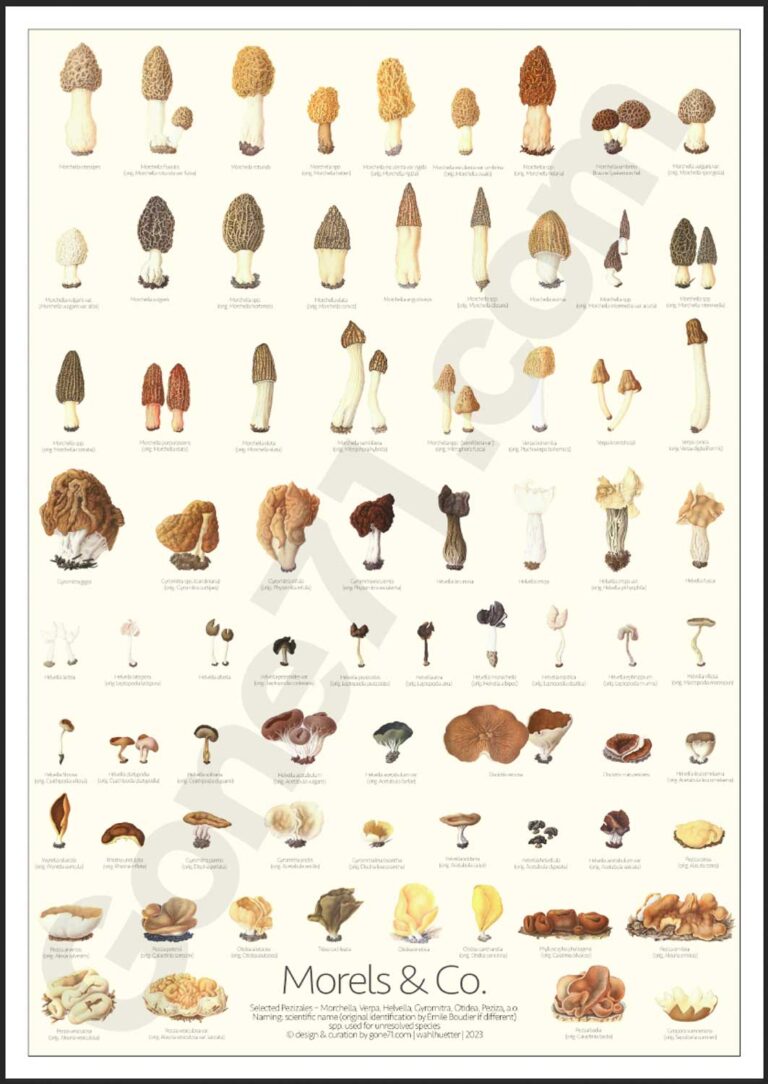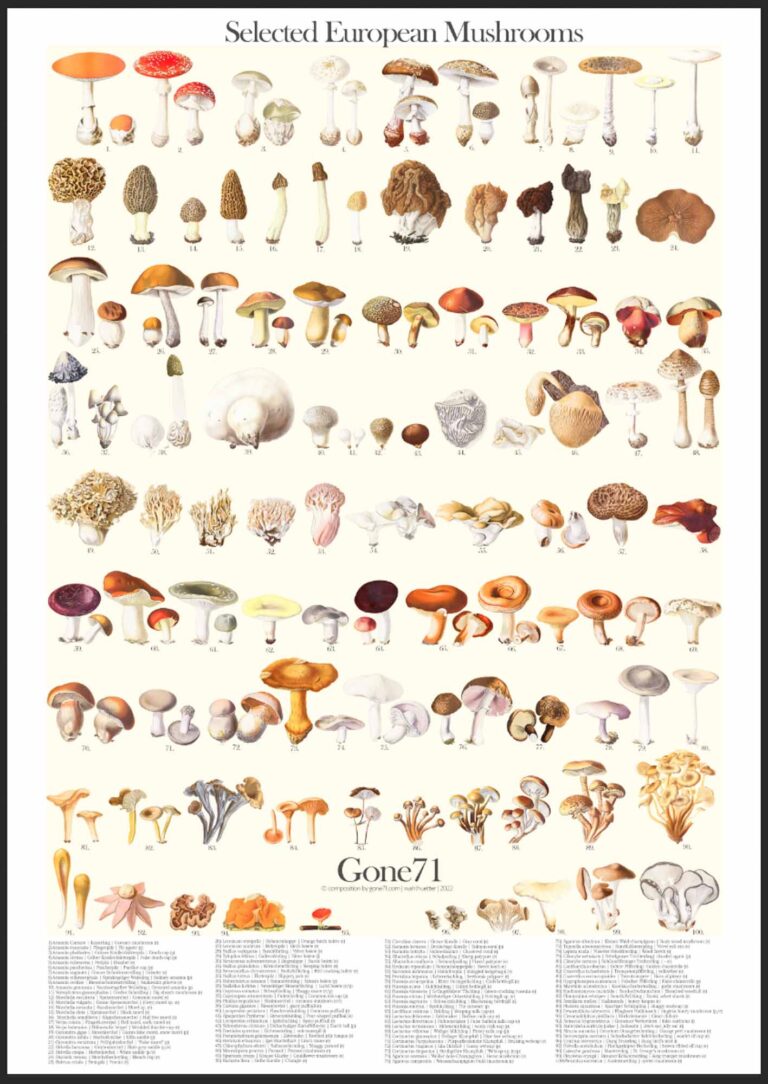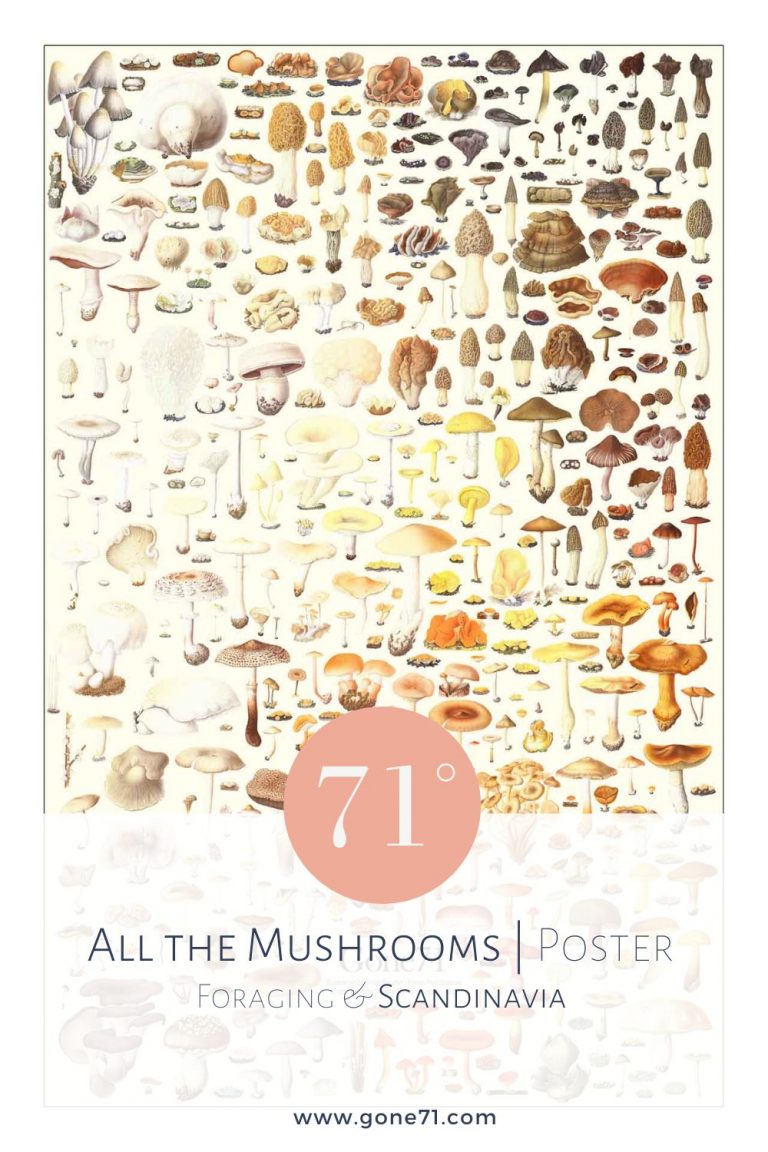nor.: Sandmorkel | swe.: Stenmurkla | fin.: Korvasieni | dt.: Frühjahrslorchel, Frühjahrs-Giftlorchel | eng. syn.: brain mushroom, elephant ears, turban fungus, beefsteak mushroom | sci. syn.: Helvella esculenta
Gyromitra esculenta, commonly known as the false morel or brain mushroom, is a species of mushroom that is widely distributed throughout the forests of Europe and North America. While it may resemble the edible morel, it is important to note that consuming it can be extremely dangerous. We do not recomend to forage this mushroom.
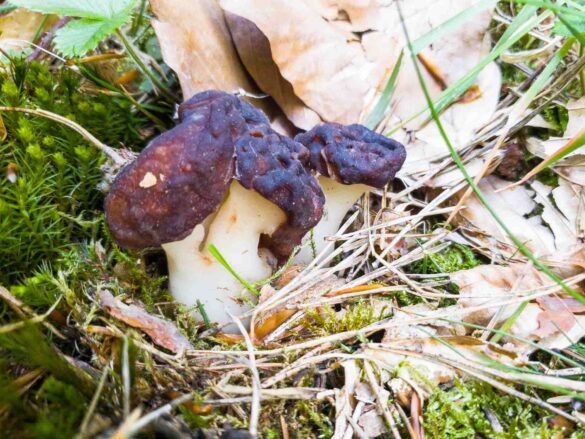
Can you eat false morels (Gyromitra esculenta)?
We would like to emphasise once again that we do not recommend the consumption of Gyromitra esculenta. The mushroom is highly toxic. This is due to the presence of a toxin called gyromitrin, which is converted to monomethylhydrazine (MMH) in the body. MMH is a highly toxic and carcinogenic compound that can cause severe liver damage, gastrointestinal distress, seizures and even death.
As the name “esculenta” suggests, the mushroom was originally considered edible. And indeed, the mushroom is still eaten in some countries and regions. In Finland, this mushroom is even marketable and is considered one of the best edible mushrooms there. There are also relevant movements on the internet that deal with the edible properties of Gyromitra species. Many swear that Gyromitra esculenta tastes even better than Common morels. This may well be true, but the associated health risk does not stand for it in our eyes.
To answer the question, Yes you can theoretically eat Gyromitra esculenta under special preparation but the general recommendation is usually that you absolutely should not.
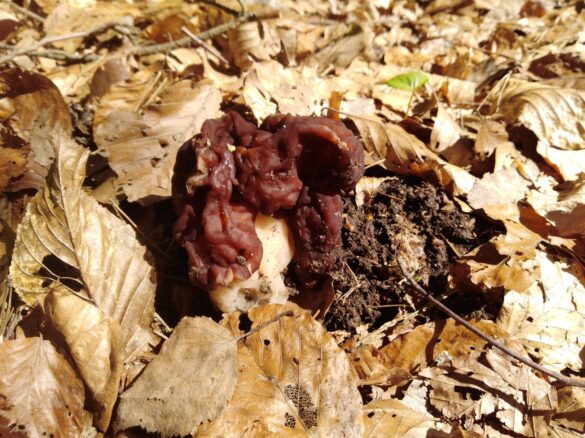
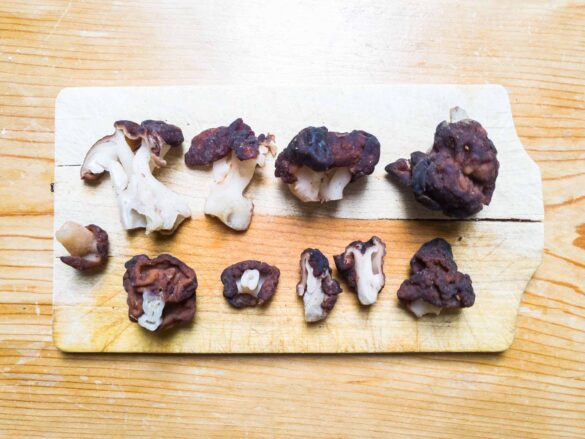
What do you have to consider when eating false morels (Gyromitra esculenta)?
The thing is that the toxin gyromitrin is largely volatilised by drying and cooking, so the mushroom would be edible in and of itself. The emphasis here is on largely, because the fruiting bodies can still contain residues of the toxin.
In addition, the toxin is also largely neutralised by cooking, but the vapours are also highly toxic and even inhalation can cause severe health problems.
Usually, cooking instructions for Gyromitra esculenta include boiling the mushrooms in pieces at least 2 times for a longer period of time. The exchange of the cooking water is essential. It is also best to cook the mushrooms outdoors to avoid inhaling the toxic fumes. As already mentioned, residues of gyromitrin can still be detected in the mushrooms even after the whole process. So if you really need the culinary aspects of Gyromitra esculenta, you should inform yourself about the dangers and health risks as well as preparation methods.
In view of the amount of wonderful edible mushrooms, you really should ask ourselves whether the risk with Gyromitra esculenta is really worth it.
Appearance & habitat of Gyromitra esculenta (false morel)

cap diameter: up to 12cm
height: up to 10cm
months: March – May (Central Europe)
colours: white to yellowish stem, brown cap
habitat: coniferous trees, such as pine
odour: spicy, mushroomy, pleasant to slightly spermatic
consumption: potentially deadly
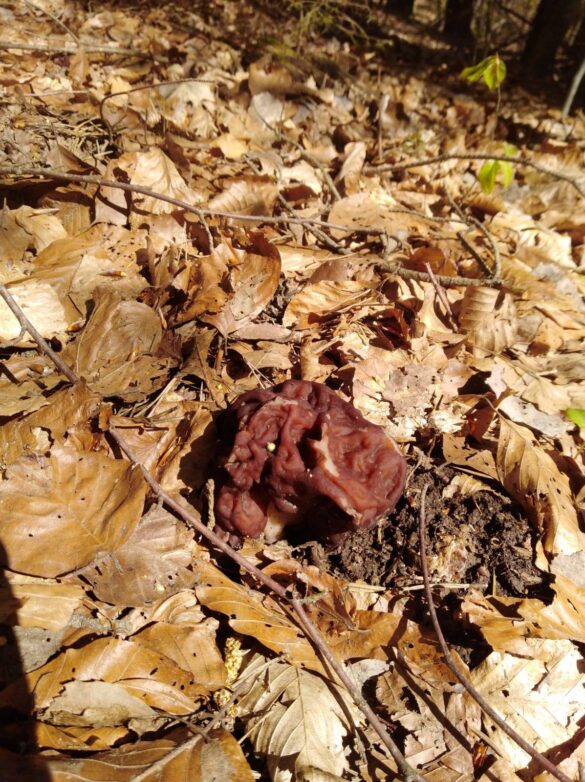
The odor of Gyromitra esculenta is described as spicy, mushroomy, mild, and pleasant to slightly spermatic.
The fruiting body of Gyromitra esculenta features a brown cap, that is twisted like a brain. The flesh is white, brittle, and waxy. The stem can be up to 10cm long and is usually white, pale yellowish brown or slightly pinkish. It is hollow, chambered, and fine-grained.
This mushroom is often found in coniferous forests, especially pine, with sandy soil, wood waste, mulch, roadside ditches, gardens, and parks, as well as in meadows with black alder and elderberry bushes, butterbur, and wood sorrel from March to May (Central Europe).
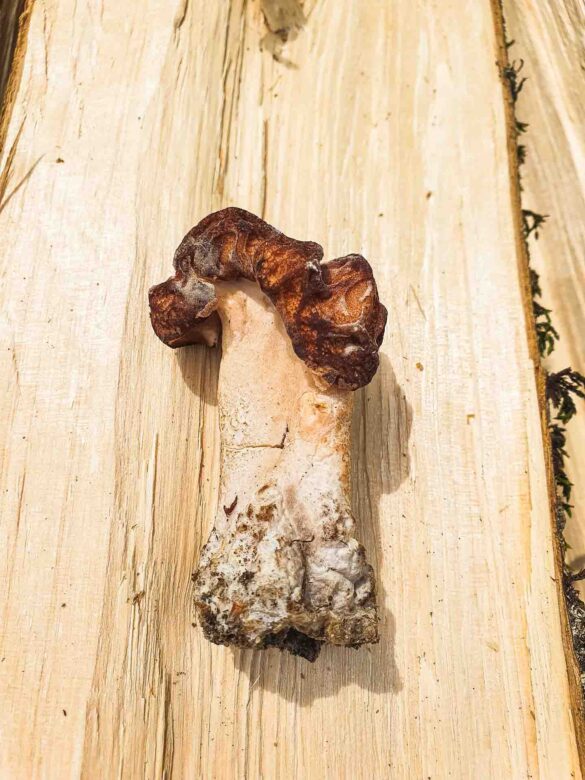
Mushrooms similar to Gyromitra esculenta
Gyromitra esculenta is sometimes confused with specis of Verpa as Verpa bohemica (early morel), Verpa conica (bell morel) or species of morels, as the Half-free morels (Morchella semilibera), black morels (Morchella elata) or common morels. These mushrooms are edible when cooked so a confusion with Gyromitra esculenta can be dangerous.
There are also several lookalikes and relatives of Gyromitra esculenta from the Gyromitra family, sometimes alsoe reffered to as false morels, that can be found in similar habitats: e.g. the giant false morel or snow morel (Gyromitra gigas) or the pouched false morel or elfin saddle (Gyromitra infula).
Gyromitra esculenta and species from the Morel and Verpa family share similar characteristics such as a wrinkled cap and a hollow stem.
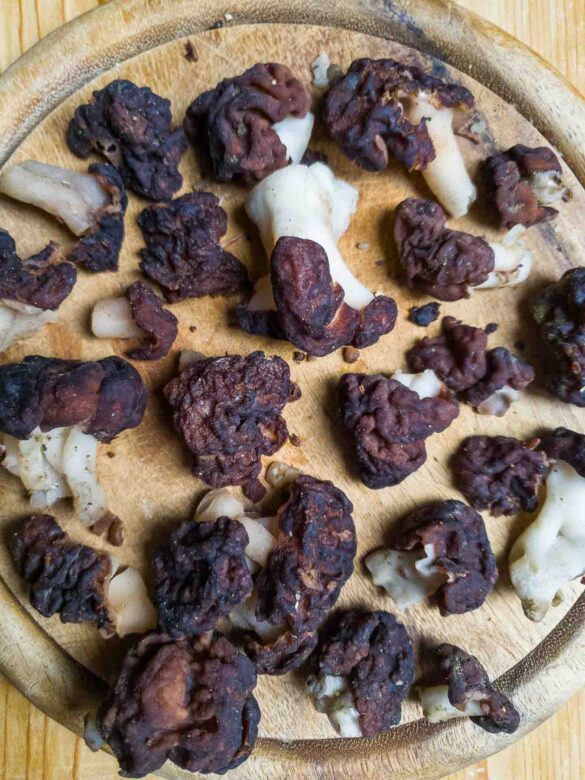
It’s therefore important to pay close attention to key identifying features, such as cap color and texture, stem shape and size, and arrangement of the cap, to accurately identify this mushroom species.
Caution: Mushrooms Are Not Guesswork!
Only harvest mushrooms that you can identify with 100% certainty! The consequences can be life threatening if you are wrong. If you have the slightest doubt: do not eat the mushroom! This is not a mushroom guide! For correct identification consult a mushroom expert.
We have compiled this overview with the best of knowledge and belief, but do not claim to be complete and reserve the right to make errors.
Learn more about poisonous mushrooms and mushroom poisons here
↓↓↓
Find some inspiration in our illustrations
↓↓↓
Find some inspiration in other mushroom recipes
↓↓↓


